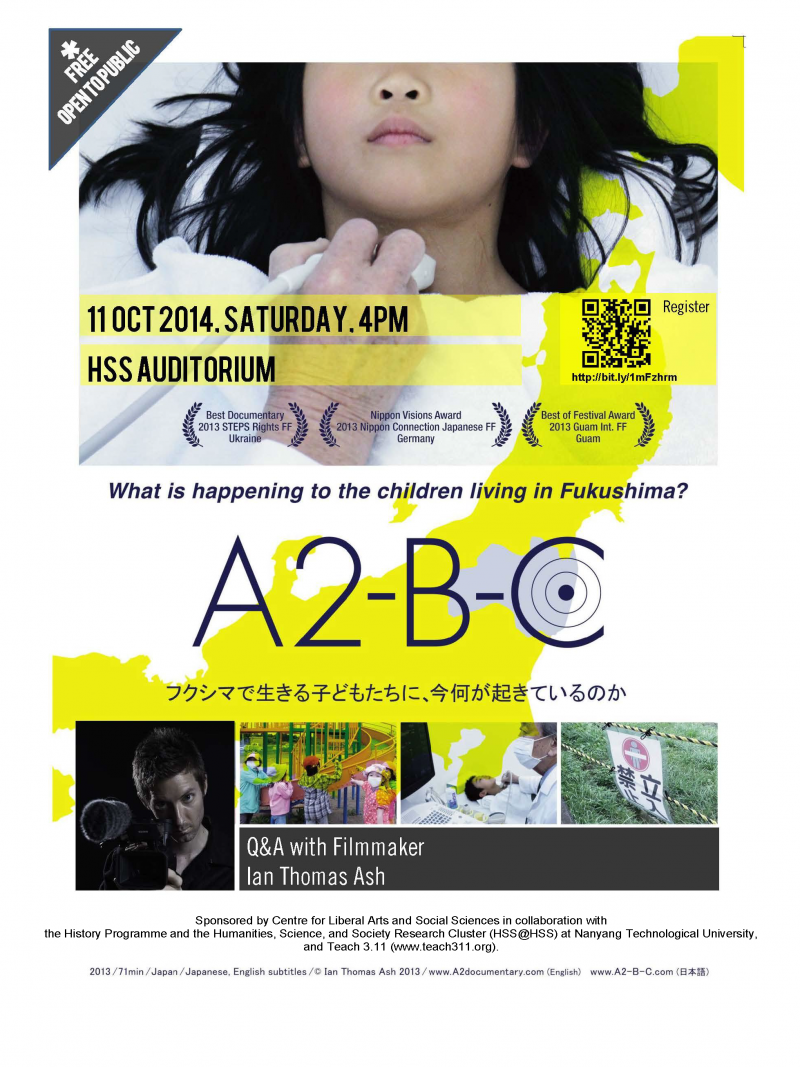A2-B-C. Directed by Ian Thomas Ash. 2013. (Documentary, 70min.)
 This documentary by the Japan-resident American filmmaker Ian Thomas Ash focuses on children and parents living in areas of Fukushima prefecture contaminated by radioactivity. Focusing exclusively on these Fukushima families, the director covers the day-to-day lives of these children and conveys the anger and anxiety of their mothers.
This documentary by the Japan-resident American filmmaker Ian Thomas Ash focuses on children and parents living in areas of Fukushima prefecture contaminated by radioactivity. Focusing exclusively on these Fukushima families, the director covers the day-to-day lives of these children and conveys the anger and anxiety of their mothers.
The ‘A2’, ‘B’ and ‘C’ in the title refer to the classifications that indicate abnormalities in the thyroid gland. Mothers of children diagnosed as A2 (indicating the presence of cysts) by the government-administered Fukushima Health Management Survey cannot help but be distrustful of the explanations from hospitals, which downplay the link to radiation. They also cannot come to terms with the response of schools, causing their frustration to mount. Also shown are the setbacks suffered by decontamination operations.
This is the director’s second film on post-disaster Fukushima, as he continued filming in Tokyo from April 2011. It was first screened overseas and, having received awards at several international film festivals, it has been ‘reimported’ and screened in Japan. Although the film is of value in that it shows the present state of Fukushima and we hear the actual voices of the mothers, the film looks only at a single group. We do not hear from mothers other than those who express their anger and anxiety. The director says he wanted “to convey the voices of the mothers of Fukushima” but we must bear in mind that this film does not necessarily speak for all the mothers of Fukushima. Moreover, the voices of others, such as experts, administrators and TEPCO [Tokyo Electric Power Company], are presented without nuance. As a consequence, this film is unable to address the reasons for the gulf in understanding between experts and administrators on one side and mothers on the other. Comparing this film to others that cover the disaster area and issue of radiation provides an opportunity to discuss what this film renders visible and what it has left out.
It also provides an important resource for examining the debates around scientific knowledge. As the Fukushima Health Management Survey was the world’s first large-scale thyroid screening survey, the link between radioactivity and the incidence of cysts in children is not yet fully understood. Experts and administrators may tell people not to worry, but increasingly distrustful mothers are wary of the authorities and look for their own ways of protecting themselves. There is thus an opportunity to debate the role played by “science” in this film.
Mutsumi Inuma, Kobe University
English translation of Japanese original: Ruselle Meade, JSPS Postdoctoral Fellow, University of Tokyo
![[Teach311 + COVID-19] Collective](https://blogs.ntu.edu.sg/teach311/files/2020/04/Banner.jpg)